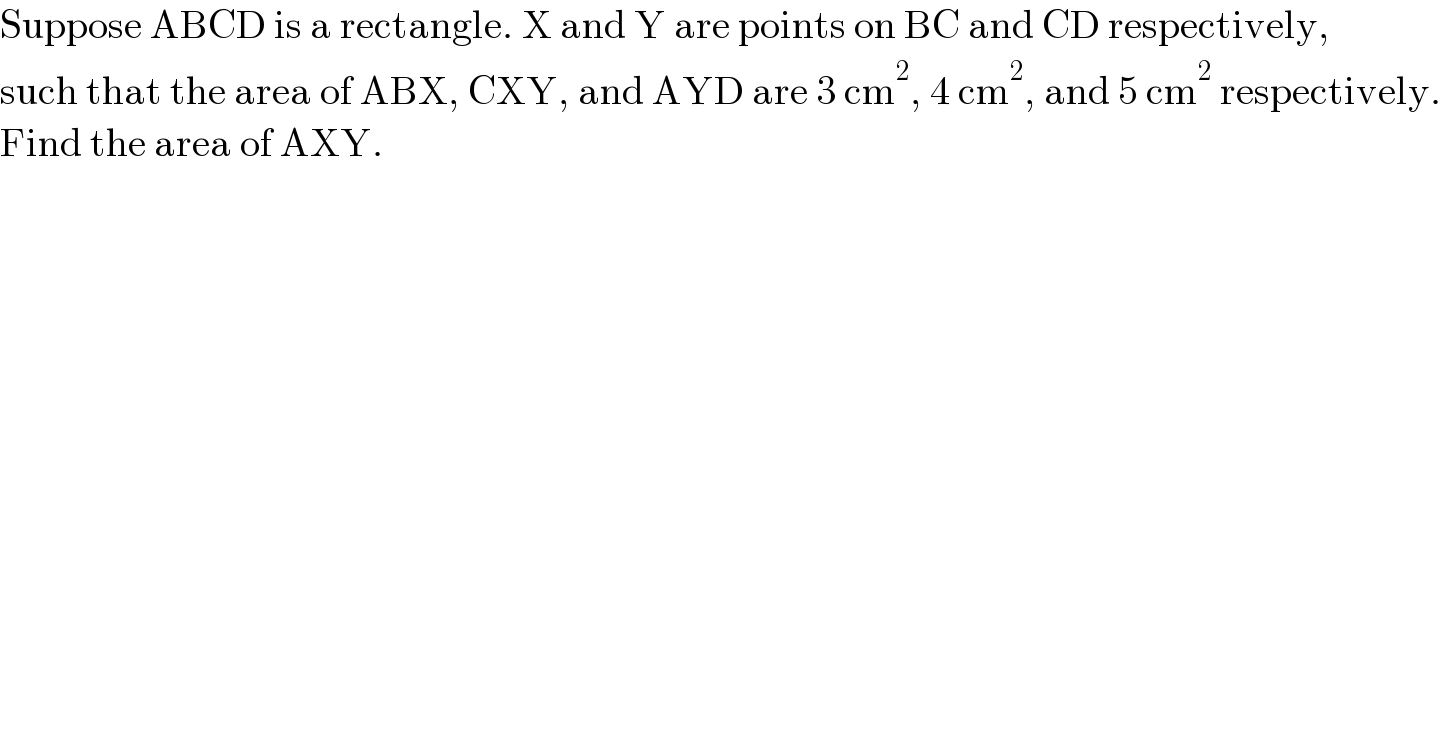
Question and Answers Forum
Question Number 176192 by adhigenz last updated on 14/Sep/22

Answered by som(math1967) last updated on 15/Sep/22
![let AB=m BC=n (1/2)×m×BX=3 BX=(6/m) CX=n−(6/m)=((mn−6)/m) YC=((8m)/(mn−6)) DY=m−((8m)/(mn−6))=m(((mn−14)/(mn−6))) ar.△AYD=5 (1/2)×n×m(((mn−14)/(mn−6)))=5 ((a^2 −14a)/(a−6))=10 [mn=ar.of rectangle=a] a^2 −24a+60=0 a=((24±(√(576−240)))/2)=((24±18.33)/2) ∴a=21.2 (approx) or2.8 but a>5 ∴a=21.2 ∴ area △AXY=21.2−(3+4+5) =21.2−12=9.2cm^2](Q176204.png)
Commented by adhigenz last updated on 15/Sep/22

| ||
Question and Answers Forum | ||
Question Number 176192 by adhigenz last updated on 14/Sep/22 | ||
 | ||
Answered by som(math1967) last updated on 15/Sep/22 | ||
![let AB=m BC=n (1/2)×m×BX=3 BX=(6/m) CX=n−(6/m)=((mn−6)/m) YC=((8m)/(mn−6)) DY=m−((8m)/(mn−6))=m(((mn−14)/(mn−6))) ar.△AYD=5 (1/2)×n×m(((mn−14)/(mn−6)))=5 ((a^2 −14a)/(a−6))=10 [mn=ar.of rectangle=a] a^2 −24a+60=0 a=((24±(√(576−240)))/2)=((24±18.33)/2) ∴a=21.2 (approx) or2.8 but a>5 ∴a=21.2 ∴ area △AXY=21.2−(3+4+5) =21.2−12=9.2cm^2](Q176204.png) | ||
| ||
Commented by adhigenz last updated on 15/Sep/22 | ||
 | ||